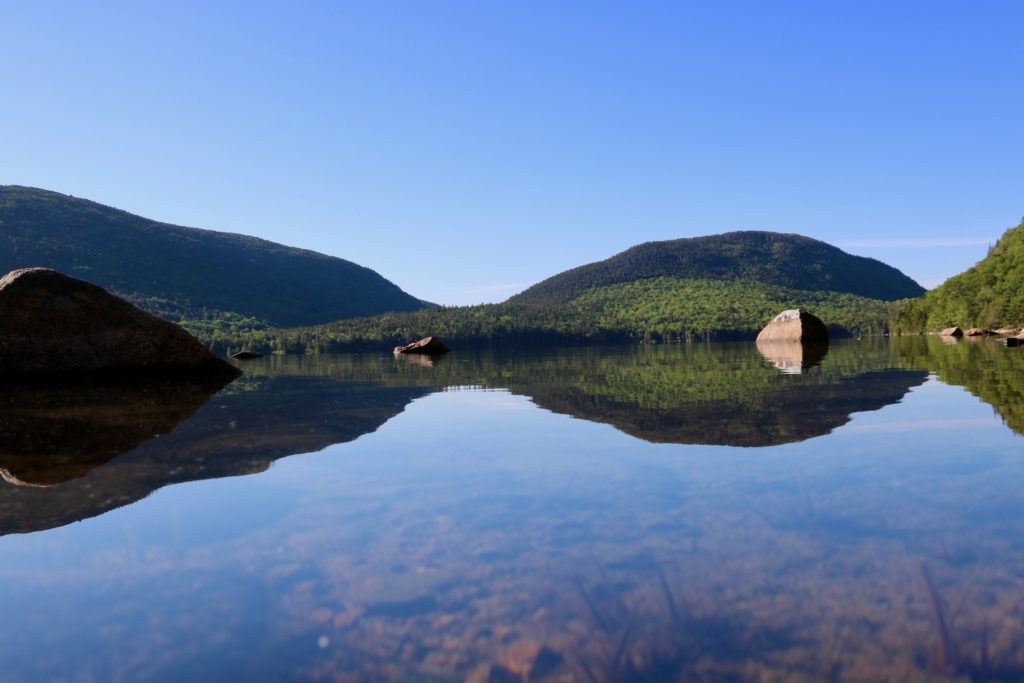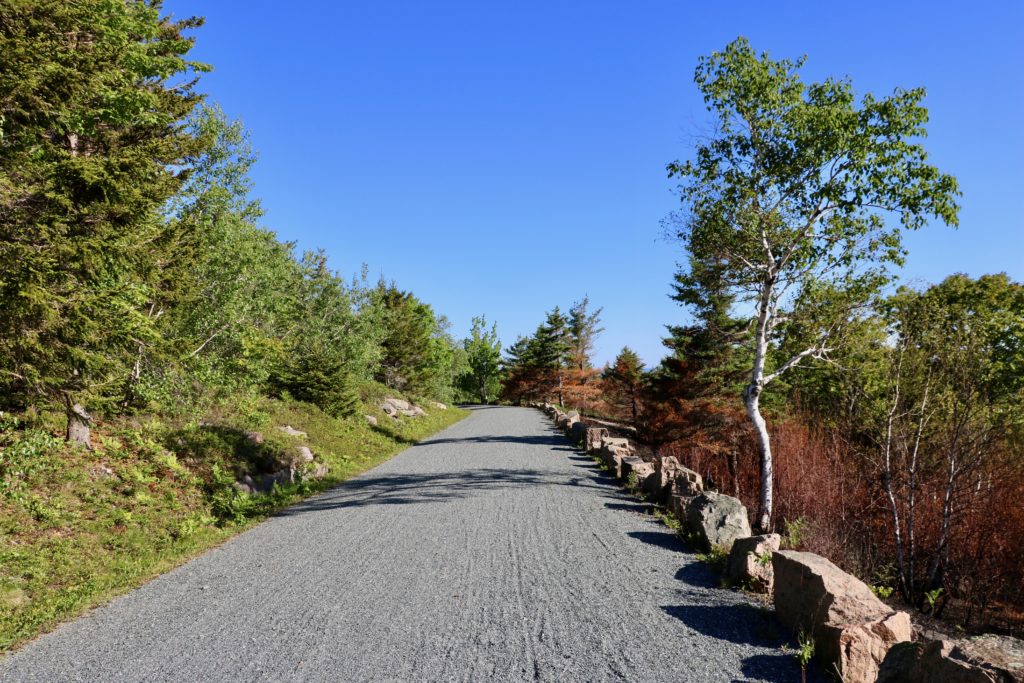While in Maine opportunities come both under and above the surface. When I’m not diving, I have the chance to explore the state of Maine. This past weekend I decided to venture north and explore Acadia National Park. One fun fact about me is I am an avid road cyclist, so much so I had to bring my bike to Maine for the summer. So, when briefly researching Acadia and what to do over the weekend, I read about the carriage roads. These roads were commissioned by John D. Rockefeller from 1913 to 1940. These 57 miles of compacted smooth gravel roads are perfect for runners, walkers, bikers, and even the occasional horse-drawn carriage. My weekend was filled with numerous miles on my bike exploring the trails and taking in all the beauty that Acadia had to offer. The highlight of the trip was climbing to the peak of Cadillac Mountain which had spectacular views of the coast and Bar Harbor.
After the great weekend, it was back to work. Doug had signed Courtney, a summer intern at Bigelow also working in the lab, and myself up for a boating course. In the event one of us needed to drive the boat we would have the proper training and knowledge of the high seas. The class was two days and consisted of learning the entire US Coast Guard “Navigation Rules and Regulations Handbook,” survival procedures for cold water environments, a multitude of anchoring methods, and how to read and plot on charts.
After the two days of the boating course, I had my AAUS class at the Darling Marine Center. Before each class, we have designated reading material from either PADI or SDI. Our class time is spent reviewing these readings and Chris Rigaud usually gives a quick PowerPoint lecture on this week’s scientific diving skill. This week class was short due to the high tide coming in at 11:15 a.m. Here in Maine and especially around East Boothbay, the tides rise and fall over nine feet! Therefore, it is essential to get out during high tide when we have the most water. We had two dives planned in which we would be reviewing our navigation and buoyancy skills, along with other small tasks. Our first dive was fairly shallow at 30ft with the water temperature reaching a chilly 51oF. During our first dive, we practiced mask removal and replacement along with buddy breathing. Chris teaches a more rigorous buddy breathing than in normal SCUBA classes. Buddy teams must share only one regulator taking two breathes and passing it to their buddy that is holding their breath. (Well not really holding their breath because we all know the number one rule in diving — never hold your breath!) The buddy team must safely ascend using this method. After practicing these skills, we were released to plan a quick dive while floating on the surface. The only stipulation of this dive was to navigate back to the departure point. We planned a short out and back dive along a nice kelp wall with massive kelp completely shading out the bottom. Lobsters and crabs scurried and hid as we passed just overhead.
After a one hour surface interval, we were back for our second dive. The sole purpose of this dive was to try and prefect our buoyancy and streamline our dive set up. Chris had set up two hula-hoops just big enough for a diver to squeeze through without touching the sides. In many buoyancy classes, students swim through swim rings or swim squares at fast speeds. Chris implored us to try and inch our way through, stating: “Anyone can maintain neutral buoyancy swimming Mach 3, but it takes real skill and control to go slowly through it.” The ultimate goal was to stop and hover exactly in the middle of this small hula-hoop a task I could not complete. These 25 minutes of us having fun and practicing our buoyancy is something many divers don’t give themselves. Most divers whether it be recreational, commercial, or scientific usual have some objective of the dive – exploring a reef, repairing a pipe, or sectioning the bottom. Most people do not dive just to try and work on their dive skills. I enjoyed and valued this practice time and hope to dedicate more time throughout this summer and in my life to working purely on such skills.
My first dive at Bigelow and in front of Doug and Thew was a bit anticlimactic. Due to unforeseen issues, we have yet to start collecting field data on the kelps, so this dive was primarily a check out dive for Thew and myself. Thew especially, wanted to make sure his gear was in working order and his new drysuit seals were properly trimmed. We used this dive to get oriented with each other’s equipment, weight systems, dump valves etc.. The second goal for this dive was to practice the sampling methods that I would need to carry out on a dive. The dive was short, around 20 minutes at 20 feet. The sampling method had us run out a 25 meters transect line on the bottom. Using the half meter quadrats I made, I would start at the beginning of the tape measure and lay my transect on the bottom. Any kelp stipe (the root) originating in the half meter transect was to be cut and put in the collection bag I carried with me. I would replicate this process four times – at the 2,4,6, and 8 meter mark on the meter line. The dive was successful because 1) Thew and I both gained knowledge of each others dive setups, and 2) I felt confident in the sampling procedures that I would be conducting independently on future dives.

Thew (left) and Doug (right) laying out all of their gear checking it over before going in the water.
To end the week, Bigelow had a BBQ on Friday for all of the employees and interns. During the BBQ there were the “Lab Olympics” going on, which had different wings of the building competing against each other in different oceanographic themed challenges. The BBQ was a good way to meet other people who worked at Bigelow and to get to know Doug and Thew on a more informal level.

From left to right: Myself, Doug, Doug’s daughter Betsy, Thew, and Courtney.
Next week we start conducting our kelp surveys. Doug, Thew, Courtney, and I will be going on a three-day dive trip to Hurricane Island to do the work.
Thank you to Our World Underwater Scholarship Society, American Academy of Underwater Sciences, and Bigelow Laboratory for Ocean Sciences for giving me this great opportunity.
-Shane






